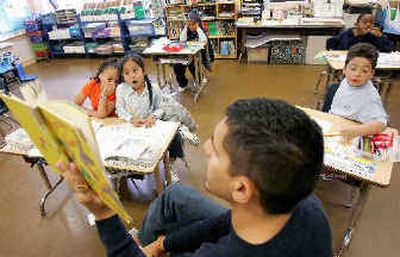SF counts small share of small fry

SAN FRANCISCO – Anne Bakstad and Ed Cohen are starting to feel as if their family of four is an endangered species in San Francisco.
Since the couple bought a house five years ago, more than a dozen families in their social circle have left the city for cheaper housing, better schools or both.
The goodbyes are so frequent that Carina, age 4 1/2 , wants to know when she is going to move, too. Eric, 2 1/2 , misses Gus, his playmate from across the street.
A similar lament is being heard in San Francisco’s half-empty classrooms, in parks where parents are losing ground to dog owners, and in the corridors of City Hall.
San Francisco has the smallest share of small fry of any major U.S. city. Just 14.5 percent of the city’s population is 18 and under.
It is no mystery why U.S. cities are losing children. The promise of safer streets, better schools and more space has drawn young families away from cities for as long as America has had suburbs.
But kids are even more scarce in San Francisco than in expensive New York (24 percent) or in retirement havens such as Palm Beach, Fla. (19 percent), according to Census estimates.
San Francisco’s large gay population – estimated at 20 percent by the city Public Health Department – is thought to be one factor, though gays and lesbians in the city are increasingly raising families.
Another reason San Francisco’s children are disappearing: Family housing in the city is especially scarce and expensive. A two-bedroom, 1,000-square-foot starter home is considered a bargain at $760,000.
A recent survey by the city controller found 40 percent of parents said they were considering pulling up stakes within the next year.